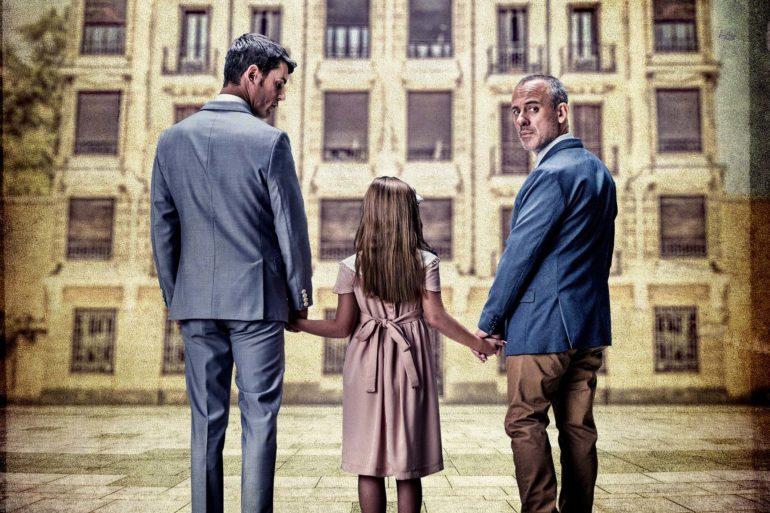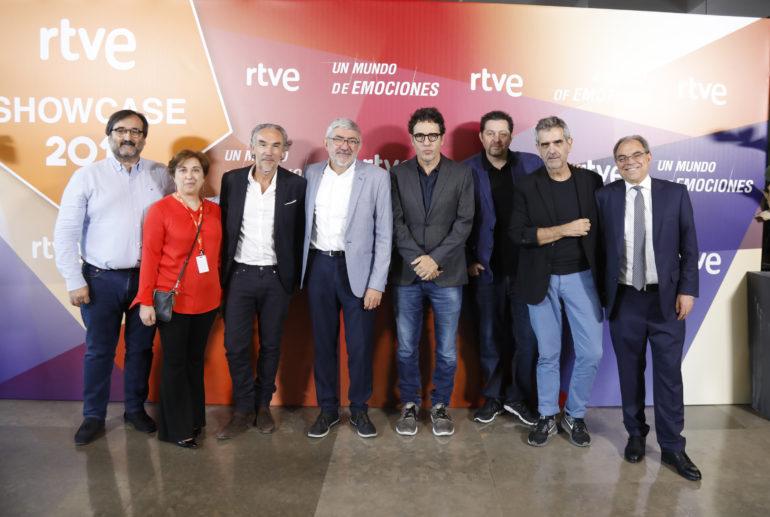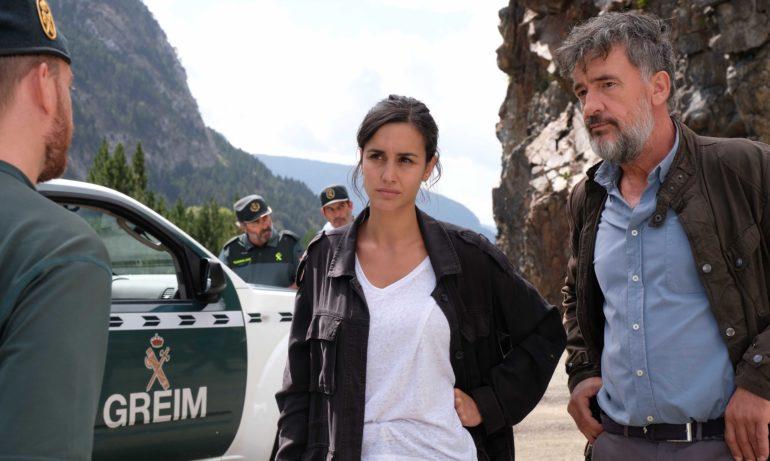RTVE Showcase: What Makes a Show ‘Spanish’?
By John Hopewell
LOS ANGELES (Variety.com) – MADRID — To face up to global platforms, high-end series from Europe have to be different. That’s almost a truism these days. One way is for shows to drink deep at the well of their national culture.
So the question of what makes a show “Spanish” threaded many of the panel reflections and presentations this week at an upbeat Showcase, a enterprising launch pad for new shows and seasons from the public broadcaster which ran May 26-28 at the Hotel Puerta de América in Madrid.
At a centerpiece panel, “Creating Fiction for a Global Audience,” answers were supplied by some of the finest minds and creators in Spain’s business: Showrunners Ramón Campos (“Velvet,” “Fariña”) and Daniel Ecija (“Locked Up,” “I’m Alive”), producers José Manuel Lorenzo at Banijay’s DLO/Magnolia and Tedy Villaba at Boomerang (“Old Bridge’s Secret,” “The Time in Between”) and screenwriter Joaquín Oristrell (“Cuéntame cómo pasó”).
The panel was moderated by Fernando Lopez Puig, TVE content & fiction production director, and a first port of call for companies looking to co-produce with RTVE.
Part of series’ Spanishness is simply their setting. RTVE’s early spring hit crime thriller “The Hunt. Monteperdido” is a striking case in point. Set in Monteperdido, in real life Benasque, a largish mountain village in a dramatic valley carving its way through the Pyrenees, it was shot 100% on location there,the camera constantly framing characters in verdant valleys, or cutting away to the huge near inhuman mountain ramparts behind.
In Ep. 1, a pretty wood by day becomes a threatening forest at night for an investigating special crime unit officer. Rather than the setting becoming another character, “Monteperdido’s” natural backdrop becomes a metaphor for the ambivalence of many of the drama’s village characters_ At first glance welcoming, but capable of seeming far more sinister.
“The Hunt: Monteperdido” could seem at its kick off to be classic Nordic Noir. Two girls disappear in the mountains. Five years later, one is found, here alive. Two cops – an odd professional couple, a senior officer who lives for his job, a junior woman cop scornful of the incompetence of the local officers – are sent in to find the other girl. They’re fish out of water.
But just as there’s Nordic Noir,, there’s Spanish and Mediterranean Noir too, Agustín Martínez, “Monteperdido’s” lead writer argued at its RTVE Showcase presentation.
“What’s the difference? It’s a question of social reality. The personality, sense of identity of Scandinavian characters bears little comparison to their Spanish counterparts.
“It’s a big difference,” he argued. “The idea of family, of a united community is very present in ‘Monteperdido.” That’s much harder to find in Nordic Noir, where characters are far more solitary and isolated.”
“Monteperdido” has “a perfect fusion between family drama, sustained episode after episode, and thriller elements as the police investigation closes in,” said Lorenzo.
Many Spanish series genre blend. Another big TVE hit,“Estoy Vivo,” produced with Mediapro’s Globomedia, is an increasingly extraordinary mash-up of supernatural/sci-fi fantasy, cop crime thriller, dramedy, romance and family dynamics, as a reincarnated cop faces off with his serial killer.
That may reflects the traditional 70-minute length of Spanish drama episodes, Daniel Ecija, “Estoy Vivo” showrunner, argued at the RTVE Showcase presentation of its Season 3, with star Alejo Sauras in attendance.
From the 1990s, when ’s private-sector channels began to power up original production, “it was impossible to write pure comedy or pure drama. We had to ring our options on different genres, because episodes’ length was so abnormal.” Ecija’s recalled. The mix is also part of a Mediterranean identity, he added. “The South would also explain why we treat drama with a sense of humor, we can dare to treat death with a sense of humor.”
Spanish series dropped their episode length from 2017. But the genre mashing habit continues, Ecija said.
Set at a Libya NGO, new RTVE series “Promises of Sand,” if a promo and presentation are anything to go by, fuses spy thriller, coming of age drama, said lead Andrea Duro, and social drama. Produced by Mediapro’s Globomedia and RTVE, like “Estoy Vivo,” “Malaka,” another Showcase highlight, is a cop drama, a cartel turf-war thriller, and a gender parity-laced story of a “powerful woman police officer battling mafias in a sun-dazzled Malaga,” according to Javier Pons, The Mediapro Studio’s co-head of TV.
Battling to keep audiences glued to the screen for 70 minutes, Spanish screenwriters have been schooled for 20 odd years in using every trick in the trade to surprise, connect, and compel audience to watch more, Ramon Campos, another panelist, always argues. It is that basic writing bootcamp which will explain the success of seasoned Spanish writers – Campos, Alex Pina and Esther Martínez Lobato – on Netflix worldwide.
“I can’t do Nordic Noir. I can only reflect my own culture and habits, what really moves me when I lie in bed at night,,” Ecija said at the RTVE Showcase. That, however, can often be a plus.



